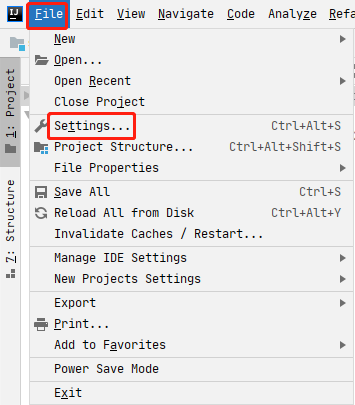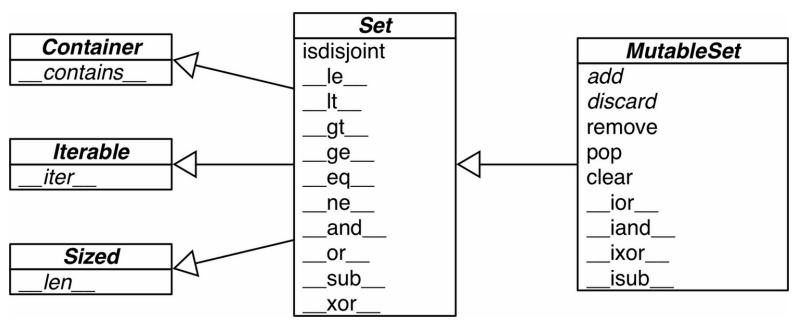Lombok-入门篇
随着编程以及各种框架的发展,大大提供了开发的简洁和便利性。在开发过程中,我们经常要定义各种Bean,在Bean中会出现大量的getter、setter方法,有时还会重写toString等方法,比如:
/*** @author javaerui* @Description:* @date 2021/1/22*/public class User {public User() {}public User(String name, long id, Integer age, boolean vip, Boolean svip) {this.name = name;this.id = id;this.age = age;this.vip = vip;this.svip = svip;}private String name;private long id;private Integer age;private boolean vip;private Boolean svip;public String getName() {return name;}public void setName(String name) {this.name = name;}public long getId() {return id;}public void setId(long id) {this.id = id;}public Integer getAge() {return age;}public void setAge(Integer age) {this.age = age;}public boolean isVip() {return vip;}public void setVip(boolean vip) {this.vip = vip;}public Boolean getSvip() {return svip;}public void setSvip(Boolean svip) {this.svip = svip;}@Overridepublic String toString() {return "User{" +"name='" + name + '\'' +", id=" + id +", age=" + age +", vip=" + vip +", svip=" + svip +'}';}}
大量的方法重置着整个类,让这个类看上去失去了很多美观性。于是,Lombok诞生了,我们只需要编写Bean的属性,然后使用Lombok提供的注解便能够完成getter、setter等方法的添加。对于JVM来说,它是只能够识别class字节码的,而我们程序员一般编写的java源码需要先编译成class字节码才能够被JVM识别并运行,所以Lombok是对class字节码做了文章,在.java文件的源码级别使用Lombok提供的注解,Lombok会在类编译成.class字节码的时候根据特定注解对类添加特定的方法,比如:
/*** @author javaerui* @Description:* @date 2021/1/22*/@NoArgsConstructor@AllArgsConstructor@Getter@Setter@ToStringpublic class User {private String name;private long id;private Integer age;private boolean vip;private Boolean svip;}
编译User.java后,用IDEA打开编译生成的User.class内容:
//// Source code recreated from a .class file by IntelliJ IDEA// (powered by Fernflower decompiler)//public class User {private String name;private long id;private Integer age;private boolean vip;private Boolean svip;public User() {}public User(String name, long id, Integer age, boolean vip, Boolean svip) {this.name = name;this.id = id;this.age = age;this.vip = vip;this.svip = svip;}public String getName() {return this.name;}public void setName(String name) {this.name = name;}public long getId() {return this.id;}public void setId(long id) {this.id = id;}public Integer getAge() {return this.age;}public void setAge(Integer age) {this.age = age;}public boolean isVip() {return this.vip;}public void setVip(boolean vip) {this.vip = vip;}public Boolean getSvip() {return this.svip;}public void setSvip(Boolean svip) {this.svip = svip;}public String toString() {return "User{name='" + this.name + '\'' + ", id=" + this.id + ", age=" + this.age + ", vip=" + this.vip + ", svip=" + this.svip + '}';}}
对User类使用了Lombok提供的注解后,类的内容实质上和上面没有使用Lombok的效果是一样的。从源码层对比两个类,使用Lombok注解后,看上去更加简洁明了了。
█ 简单使用
(1)IDEA安装Lombok插件:


(2)引入依赖:
<dependency><groupId>org.projectlombok</groupId><artifactId>lombok</artifactId><version>1.18.16</version><scope>provided</scope></dependency>
(3)以User类为例,查看Lombok提供的注解所对应的方法。
public class User {private String name;private long id;private Integer age;private boolean vip;private Boolean svip;}
- @Getter
对Bean的属性构建标准getter方法。
源码:
@Getterpublic class User {private String name;private long id;private Integer age;private boolean vip;private Boolean svip;}
编译后:
//// Source code recreated from a .class file by IntelliJ IDEA// (powered by Fernflower decompiler)//public class User {private String name;private long id;private Integer age;private boolean vip;private Boolean svip;public User() {}public String getName() {return this.name;}public long getId() {return this.id;}public Integer getAge() {return this.age;}public boolean isVip() {return this.vip;}public Boolean getSvip() {return this.svip;}}
- @Setter
对属性构建set方法。
源码:
@Setterpublic class User {private String name;private long id;private Integer age;private boolean vip;private Boolean svip;}
编译后:
//// Source code recreated from a .class file by IntelliJ IDEA// (powered by Fernflower decompiler)//public class User {private String name;private long id;private Integer age;private boolean vip;private Boolean svip;public User() {}public void setName(String name) {this.name = name;}public void setId(long id) {this.id = id;}public void setAge(Integer age) {this.age = age;}public void setVip(boolean vip) {this.vip = vip;}public void setSvip(Boolean svip) {this.svip = svip;}}
- @ToString
重写toString方法。
源码:
@ToStringpublic class User {private String name;private long id;private Integer age;private boolean vip;private Boolean svip;}
编译后:
//// Source code recreated from a .class file by IntelliJ IDEA// (powered by Fernflower decompiler)//public class User {private String name;private long id;private Integer age;private boolean vip;private Boolean svip;public User() {}public String toString() {return "User(name=" + this.name + ", id=" + this.id + ", age=" + this.age + ", vip=" + this.vip + ", svip=" + this.svip + ")";}}
- @EqualsAndHashCode
重写equals与hashcode方法。
源码:
@EqualsAndHashCodepublic class User {private String name;private long id;private Integer age;private boolean vip;private Boolean svip;}
编译后,从下面的方法可以看出,Lombok重写的方法会比较所有属性:
//// Source code recreated from a .class file by IntelliJ IDEA// (powered by Fernflower decompiler)//public class User {private String name;private long id;private Integer age;private boolean vip;private Boolean svip;public User() {}public boolean equals(Object o) {if (o == this) {return true;} else if (!(o instanceof User)) {return false;} else {User other = (User)o;if (!other.canEqual(this)) {return false;} else if (this.id != other.id) {return false;} else if (this.vip != other.vip) {return false;} else {label52: {Object this$age = this.age;Object other$age = other.age;if (this$age == null) {if (other$age == null) {break label52;}} else if (this$age.equals(other$age)) {break label52;}return false;}Object this$svip = this.svip;Object other$svip = other.svip;if (this$svip == null) {if (other$svip != null) {return false;}} else if (!this$svip.equals(other$svip)) {return false;}Object this$name = this.name;Object other$name = other.name;if (this$name == null) {if (other$name != null) {return false;}} else if (!this$name.equals(other$name)) {return false;}return true;}}}protected boolean canEqual(Object other) {return other instanceof User;}public int hashCode() {int PRIME = true;int result = 1;long $id = this.id;int result = result * 59 + (int)($id >>> 32 ^ $id);result = result * 59 + (this.vip ? 79 : 97);Object $age = this.age;result = result * 59 + ($age == null ? 43 : $age.hashCode());Object $svip = this.svip;result = result * 59 + ($svip == null ? 43 : $svip.hashCode());Object $name = this.name;result = result * 59 + ($name == null ? 43 : $name.hashCode());return result;}}
- @AllArgsConstructor、@NoArgsConstructor
@AllArgsConstructor构建全参构造器,@NoArgsConstructor构建无参构造器。
源码:
@AllArgsConstructor@NoArgsConstructorpublic class User {private String name;private long id;private Integer age;private boolean vip;private Boolean svip;}
编译后:
//// Source code recreated from a .class file by IntelliJ IDEA// (powered by Fernflower decompiler)//public class User {private String name;private long id;private Integer age;private boolean vip;private Boolean svip;public User(String name, long id, Integer age, boolean vip, Boolean svip) {this.name = name;this.id = id;this.age = age;this.vip = vip;this.svip = svip;}public User() {}}
- @Builder
对Bean构建Builder构建者模式。
源码:
@Builderpublic class User {private String name;private long id;private Integer age;private boolean vip;private Boolean svip;}
编译后:
//// Source code recreated from a .class file by IntelliJ IDEA// (powered by Fernflower decompiler)//public class User {private String name;private long id;private Integer age;private boolean vip;private Boolean svip;User(String name, long id, Integer age, boolean vip, Boolean svip) {this.name = name;this.id = id;this.age = age;this.vip = vip;this.svip = svip;}public static User.UserBuilder builder() {return new User.UserBuilder();}public static class UserBuilder {private String name;private long id;private Integer age;private boolean vip;private Boolean svip;UserBuilder() {}public User.UserBuilder name(String name) {this.name = name;return this;}public User.UserBuilder id(long id) {this.id = id;return this;}public User.UserBuilder age(Integer age) {this.age = age;return this;}public User.UserBuilder vip(boolean vip) {this.vip = vip;return this;}public User.UserBuilder svip(Boolean svip) {this.svip = svip;return this;}public User build() {return new User(this.name, this.id, this.age, this.vip, this.svip);}public String toString() {return "User.UserBuilder(name=" + this.name + ", id=" + this.id + ", age=" + this.age + ", vip=" + this.vip + ", svip=" + this.svip + ")";}}}
- @Cleanup
用于局部变量,会调用变量的close方法来关闭资源。@Cleanup标记的局部变量,必须具有close方法。
源码:
public void method() throws IOException {@Cleanup FileOutputStream fileOutputStream = new FileOutputStream("E:\\Downloads\\java.txt");fileOutputStream.write("Hello World".getBytes());}
编译后:
public void method() throws IOException {FileOutputStream fileOutputStream = new FileOutputStream("E:\\Downloads\\java.txt");try {fileOutputStream.write("Hello World".getBytes());} finally {if (Collections.singletonList(fileOutputStream).get(0) != null) {fileOutputStream.close();}}}
- @NonNull
非空检查,当设置的值为空时,会抛异常。
public void setName(@NonNull String name) {this.name = name;}
调用,对name进行赋值为null:
User user = new User();user.setName(null);
抛异常:

- @RequiredArgsConstructor
对标记了@NonNull的属性构建有参构造器。
源码:
@RequiredArgsConstructorpublic class User {@NonNullprivate String name;private long id;private Integer age;@NonNullprivate boolean vip;private Boolean svip;}
编译后,从这里可以看出@NonNull标注的字段会加非空判断:
//// Source code recreated from a .class file by IntelliJ IDEA// (powered by Fernflower decompiler)//import lombok.NonNull;public class User {@NonNullprivate String name;private long id;private Integer age;@NonNullprivate boolean vip;private Boolean svip;public User(@NonNull String name, @NonNull boolean vip) {if (name == null) {throw new NullPointerException("name is marked non-null but is null");} else {this.name = name;this.vip = vip;}}}
- @Data
作用是@Getter、@Setter、@ToString、@EqualsAndHashCode、@RequiredArgsConstructor的聚合。
源码:
@Datapublic class User {private String name;private long id;private Integer age;private boolean vip;private Boolean svip;}
编译后:
//// Source code recreated from a .class file by IntelliJ IDEA// (powered by Fernflower decompiler)//import java.util.List;import lombok.NonNull;public class User {@NonNullprivate String name;private long id;private Integer age;private boolean vip;private Boolean svip;private List<String> list;public User(@NonNull String name) {if (name == null) {throw new NullPointerException("name is marked non-null but is null");} else {this.name = name;}}@NonNullpublic String getName() {return this.name;}public long getId() {return this.id;}public Integer getAge() {return this.age;}public boolean isVip() {return this.vip;}public Boolean getSvip() {return this.svip;}public List<String> getList() {return this.list;}public void setName(@NonNull String name) {if (name == null) {throw new NullPointerException("name is marked non-null but is null");} else {this.name = name;}}public void setId(long id) {this.id = id;}public void setAge(Integer age) {this.age = age;}public void setVip(boolean vip) {this.vip = vip;}public void setSvip(Boolean svip) {this.svip = svip;}public void setList(List<String> list) {this.list = list;}public boolean equals(Object o) {if (o == this) {return true;} else if (!(o instanceof User)) {return false;} else {User other = (User)o;if (!other.canEqual(this)) {return false;} else if (this.getId() != other.getId()) {return false;} else if (this.isVip() != other.isVip()) {return false;} else {label64: {Object this$age = this.getAge();Object other$age = other.getAge();if (this$age == null) {if (other$age == null) {break label64;}} else if (this$age.equals(other$age)) {break label64;}return false;}label57: {Object this$svip = this.getSvip();Object other$svip = other.getSvip();if (this$svip == null) {if (other$svip == null) {break label57;}} else if (this$svip.equals(other$svip)) {break label57;}return false;}Object this$name = this.getName();Object other$name = other.getName();if (this$name == null) {if (other$name != null) {return false;}} else if (!this$name.equals(other$name)) {return false;}Object this$list = this.getList();Object other$list = other.getList();if (this$list == null) {if (other$list != null) {return false;}} else if (!this$list.equals(other$list)) {return false;}return true;}}}protected boolean canEqual(Object other) {return other instanceof User;}public int hashCode() {int PRIME = true;int result = 1;long $id = this.getId();int result = result * 59 + (int)($id >>> 32 ^ $id);result = result * 59 + (this.isVip() ? 79 : 97);Object $age = this.getAge();result = result * 59 + ($age == null ? 43 : $age.hashCode());Object $svip = this.getSvip();result = result * 59 + ($svip == null ? 43 : $svip.hashCode());Object $name = this.getName();result = result * 59 + ($name == null ? 43 : $name.hashCode());Object $list = this.getList();result = result * 59 + ($list == null ? 43 : $list.hashCode());return result;}public String toString() {return "User(name=" + this.getName() + ", id=" + this.getId() + ", age=" + this.getAge() + ", vip=" + this.isVip() + ", svip=" + this.getSvip() + ", list=" + this.getList() + ")";}}
- @SneakyThrows
标记方法抛出的异常。
源码:
@SneakyThrows(IOException.class)public void method() {FileOutputStream fileOutputStream = new FileOutputStream("E:\\Downloads\\java.txt");fileOutputStream.write("Hello World".getBytes());}
编译后:
public void method() {try {FileOutputStream fileOutputStream = new FileOutputStream("E:\\Downloads\\java.txt");fileOutputStream.write("Hello World".getBytes());} catch (IOException var2) {throw var2;}}
- @Synchronized
对方法体进行同步操作。
源码:
@Synchronizedpublic void method() throws IOException{FileOutputStream fileOutputStream = new FileOutputStream("E:\\Downloads\\java.txt");fileOutputStream.write("Hello World".getBytes());}
编译后:
private final Object $lock = new Object[0];public void method() throws IOException {synchronized(this.$lock) {FileOutputStream fileOutputStream = new FileOutputStream("E:\\Downloads\\java.txt");fileOutputStream.write("Hello World".getBytes());}}
- @Value
构建一个final修饰的类,并提供全参构造器,getter方法,重新equals、hashcode、toString方法。
源码:
@Valuepublic class User {private String name;private long id;private Integer age;private boolean vip;private Boolean svip;}
编译后:
//// Source code recreated from a .class file by IntelliJ IDEA// (powered by Fernflower decompiler)//public final class User {private final String name;private final long id;private final Integer age;private final boolean vip;private final Boolean svip;public User(String name, long id, Integer age, boolean vip, Boolean svip) {this.name = name;this.id = id;this.age = age;this.vip = vip;this.svip = svip;}public String getName() {return this.name;}public long getId() {return this.id;}public Integer getAge() {return this.age;}public boolean isVip() {return this.vip;}public Boolean getSvip() {return this.svip;}public boolean equals(Object o) {if (o == this) {return true;} else if (!(o instanceof User)) {return false;} else {User other = (User)o;if (this.getId() != other.getId()) {return false;} else if (this.isVip() != other.isVip()) {return false;} else {label49: {Object this$age = this.getAge();Object other$age = other.getAge();if (this$age == null) {if (other$age == null) {break label49;}} else if (this$age.equals(other$age)) {break label49;}return false;}Object this$svip = this.getSvip();Object other$svip = other.getSvip();if (this$svip == null) {if (other$svip != null) {return false;}} else if (!this$svip.equals(other$svip)) {return false;}Object this$name = this.getName();Object other$name = other.getName();if (this$name == null) {if (other$name != null) {return false;}} else if (!this$name.equals(other$name)) {return false;}return true;}}}public int hashCode() {int PRIME = true;int result = 1;long $id = this.getId();int result = result * 59 + (int)($id >>> 32 ^ $id);result = result * 59 + (this.isVip() ? 79 : 97);Object $age = this.getAge();result = result * 59 + ($age == null ? 43 : $age.hashCode());Object $svip = this.getSvip();result = result * 59 + ($svip == null ? 43 : $svip.hashCode());Object $name = this.getName();result = result * 59 + ($name == null ? 43 : $name.hashCode());return result;}public String toString() {return "User(name=" + this.getName() + ", id=" + this.getId() + ", age=" + this.getAge() + ", vip=" + this.isVip() + ", svip=" + this.getSvip() + ")";}}
- @With
构建一个withXX的方法,实现将参数比较,如果是相等,返回当前对象,如果不等,创建新的对象。@With标记的类必须提供一个全参构造器,否则无法编译通过(为什么呢?看完编译后的源码就清楚了)。
源码:
@AllArgsConstructor@Withpublic class User {private String name;public User(String name) {this.name = name;}private long id;private Integer age;private boolean vip;private Boolean svip;}
编译后:
//// Source code recreated from a .class file by IntelliJ IDEA// (powered by Fernflower decompiler)//public class User {private String name;private long id;private Integer age;private boolean vip;private Boolean svip;public User(String name) {this.name = name;}public User(String name, long id, Integer age, boolean vip, Boolean svip) {this.name = name;this.id = id;this.age = age;this.vip = vip;this.svip = svip;}public User withName(String name) {// 通过new User的全参构造器创建对象的,所以必须提供一个全参构造器return this.name == name ? this : new User(name, this.id, this.age, this.vip, this.svip);}public User withId(long id) {return this.id == id ? this : new User(this.name, id, this.age, this.vip, this.svip);}public User withAge(Integer age) {return this.age == age ? this : new User(this.name, this.id, age, this.vip, this.svip);}public User withVip(boolean vip) {return this.vip == vip ? this : new User(this.name, this.id, this.age, vip, this.svip);}public User withSvip(Boolean svip) {return this.svip == svip ? this : new User(this.name, this.id, this.age, this.vip, svip);}}
- var、val
声明局部变量。
源码:
public void method() {var x = 10;val y = 1.1;var list = new ArrayList<>();list.add("hello world");}
编译后:
public void method() {int x = true;double y = 1.1D;ArrayList<Object> list = new ArrayList();list.add("hello world");}
- @CommonsLog
日志相关,构建log字段,类型为org.apache.commons.logging.Log。使用的时候要引入相对应的日志依赖。
源码:
@CommonsLogpublic class User {}
编译后:
public class User {private static final org.apache.commons.logging.Log log =org.apache.commons.logging.LogFactory.getLog(User.class);}
- @Flogger、@JBossLog、@Log、@Log4j、@Log4j2、@Slf4j、@XSlf4j
和@CommonsLog一样都是日志相关,区别是Log类型不同。
@Flogger:
private static final com.google.common.flogger.FluentLogger log = com.google.common.flogger.FluentLogger.forEnclosingClass();
@JBossLog:
private static final org.jboss.logging.Logger log = org.jboss.logging.Logger.getLogger(User.class);
@Log:
private static final java.util.logging.Logger log = java.util.logging.Logger.getLogger(User.class.getName());
@Log4j:
private static final org.apache.log4j.Logger log = org.apache.log4j.Logger.getLogger(User.class);
@Log4j2:
private static final org.apache.logging.log4j.Logger log = org.apache.logging.log4j.LogManager.getLogger(User.class);
@Slf4j:
private static final org.slf4j.Logger log = org.slf4j.LoggerFactory.getLogger(User.class);
@XSlf4j:
private static final org.slf4j.ext.XLogger log = org.slf4j.ext.XLoggerFactory.getXLogger(User.class);
关于Lombok的详细介绍,请戳《Lombok-高级篇》



































还没有评论,来说两句吧...